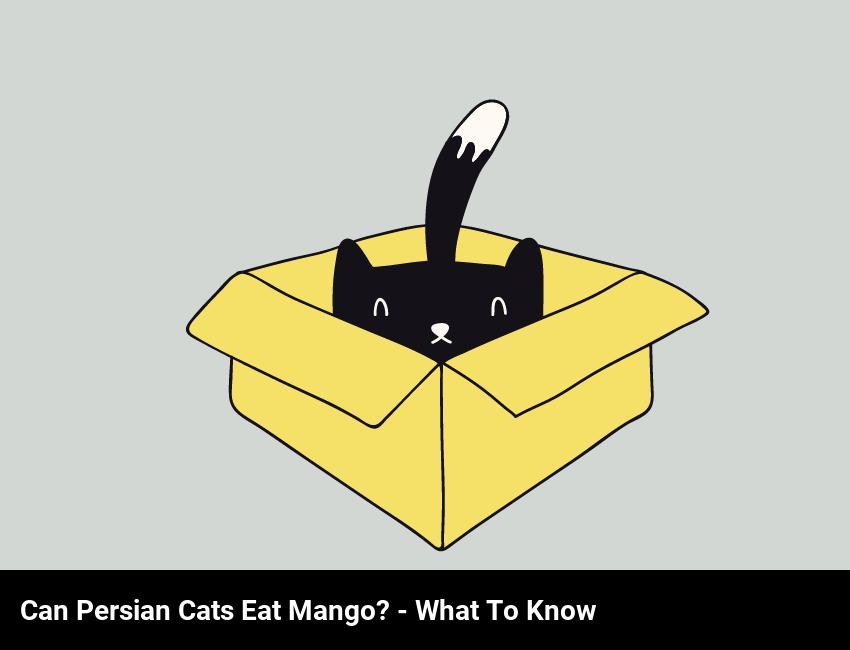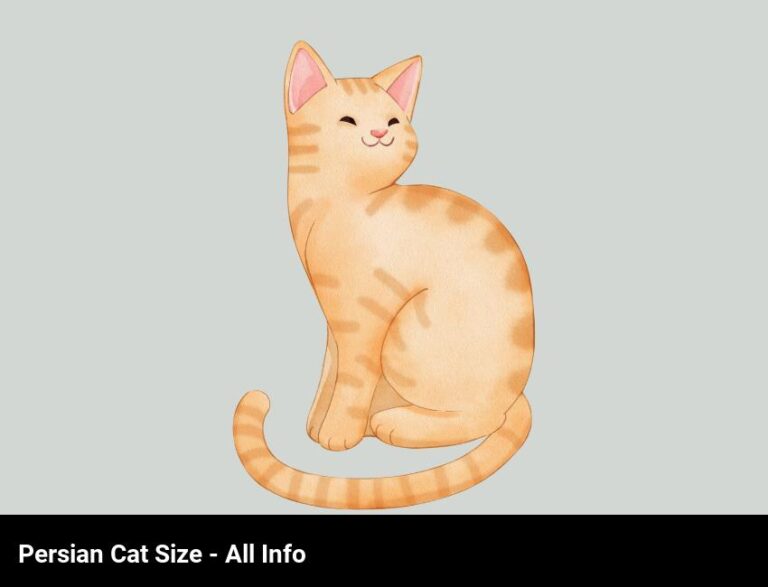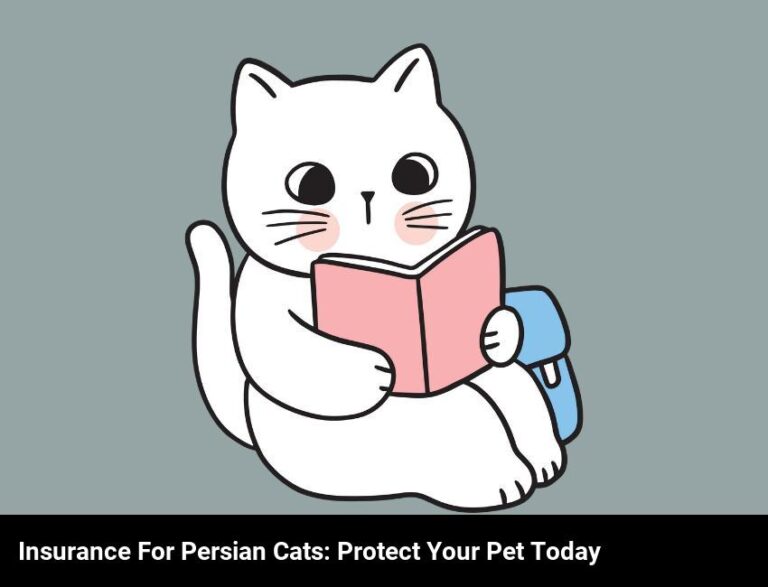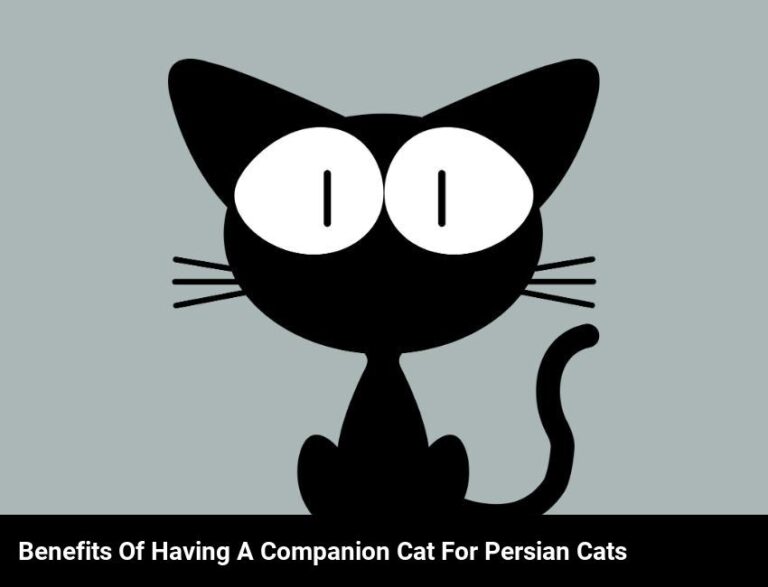Can Persian Cats Eat Mango? What To Know
Yes, Persian cats can eat mango, as long as it is ripe and cut into small pieces. Make sure to remove the pit, stem, and skin before feeding it to your cat. Offer only small amounts as part of a balanced diet, and monitor your cat for any signs of digestive upset.
As a proud owner of a Persian cat, I’ve always been curious about feeding them different types of food. When I heard that mangoes were a safe and healthy treat for cats, I was thrilled! I had to know more. Could my Persian cat eat mango? What are the health benefits of feeding them this delicious treat?
I soon discovered that mangoes can be a great addition to my Persian cat’s diet. Not only do they provide essential vitamins and minerals, but they are also low in fat and cholesterol. However, there are some potential risks that come with feeding mangoes to cats. It’s important to understand the nutritional value of mangoes and the potential risks before giving them to your Persian cat.
In this blog, I’ll answer all your questions about feeding mangoes to Persian cats. I’ll go over the nutritional value, the health benefits, the potential risks, how much to feed, and some tasty ways to incorporate mangoes into your cat’s diet.
What is the nutritional value of mango?
Yes, mangoes are a great source of nutrition. Not only are they filled with vitamins and minerals, they’re low in calories and fat, and packed with fiber too. Mango is rich in Vitamin A and C. It’s also a great source of Vitamin B6, which helps to regulate the body’s metabolism. Plus, the sweet, juicy flesh of the mango is a great source of fiber and helps to keep your digestive system healthy.
Mangoes have plenty of healthy antioxidants too. These antioxidants help to keep your cells healthy and protect them from damage. Plus, mangoes are a great source of potassium, which helps to regulate blood pressure and keep your heart healthy.
Mangoes also contain a variety of other nutrients including magnesium, phosphorus, manganese, and zinc. These all work together to keep your body functioning properly. Thus, it’s clear that mangoes have a wide range of nutritional benefits.
In conclusion, mangoes are a great snack for your Persian cat. Not only are they filled with vitamins, minerals, and other essential nutrients, they’re low in calories and fat, and packed with fiber too.
Are mangoes safe for persian cats to eat?
Yes, Persian cats can eat mango, as long as it’s ripe and has had the skin and pit removed. This delicious fruit is a great source of vitamins and minerals, like vitamins A, B-6, and C, and potassium, magnesium, and copper. It’s also packed with dietary fiber, helping your Persian cat feel full and supporting a healthy digestive system.
Just one caution: Persian cats are not used to the strong taste of mango, so introduce your pet to it slowly and in small amounts. Start with a few pieces of diced mango, then gradually increase the amount. If your Persian cat does not seem to like the flavor, cut back and try again.
Also, make sure you don’t overfeed your Persian cat mango. Too much of this fruit can cause diarrhea or upset stomach. So, give your cat only a few pieces of diced mango at a time.
Finally, remember to remove the skin, pit, and seeds before giving mango to your Persian cat. The skin and pit can be difficult to digest and the seeds can be a choking hazard. So, it’s best to play it safe and keep these parts out of your pet’s diet.
In conclusion, Persian cats can safely eat mango as long as you take a few precautions. This delicious and vitamin-packed fruit can make a healthy addition to your pet’s diet, but make sure you introduce it slowly and in small amounts. Always remove the skin, pit, and seeds to keep your pet safe.
What are the potential risks of feeding persian cats mango?
The short answer is yes, Persian cats can eat mango with no major issues, as long as it’s not their primary diet and it’s given in moderation. However, there are potential risks associated with feeding mango to Persian cats.
The most common risk is that the mango’s fiber and sugar content can cause gastrointestinal upset. To avoid this, make sure that your Persian cat only gets a small amount of mango as an occasional treat. Too much mango can cause diarrhea, vomiting, and other digestive problems.
Mango pits can be a choking hazard for cats, so you should always remove the pit before giving it to your Persian cat. The pit can also contain small traces of toxin, so it’s best to avoid it altogether.
Make sure that the mango you give your Persian cat is ripe and not overly sweet, as this can be too sugary for cats. You should also avoid giving your Persian cat canned or dried mango, as this can contain added sugars and other additives that cats should not be eating.
In general, the potential risks associated with feeding mango to Persian cats are not substantial. As long as you give your cat mango in moderation and make sure that the mango is ripe, free of pits and additives, there’s no reason why your Persian cat can’t enjoy the occasional mango treat.
What are the health benefits of feeding persian cats mango?
Yes! Persian cats can benefit from eating mango, which is packed with essential vitamins and minerals that can help keep your kitty healthy and happy. Here are some of the health benefits of feeding your Persian cat mango:
- Improved digestion: The high fiber content of mango can help your Persian cat maintain regular digestion and reduce gastrointestinal issues.
- Strengthened immune system: Vitamins A and C, as well as other antioxidants, in mango can help strengthen your cat’s immune system and keep them healthy.
- Improved skin and coat: The omega-3 fatty acid content of mango can help keep your Persian cat’s skin and coat healthy, shiny, and free from irritation.
- Healthy teeth and gums: The crunchiness of mango can help keep your Persian cat’s teeth and gums clean by removing plaque and tartar buildup.
So go ahead and give your furry friend a delicious treat – a few slices of mango! Just make sure to remove the skin and the pit before serving, and only feed your Persian cat a small amount of mango at a time.
How much mango should persian cats eat?
Good news! Persian cats can enjoy the occasional mango as part of their diet. But how much mango should they eat?
The answer is that Persian cats should consume mango in moderation. Persian cats can benefit from the vitamins, minerals, and antioxidants found in mango, but it should not be a major part of their diet.
It is important to note that the sugar content of mangoes is high, so it is best to serve small portions of mango to Persian cats. A few bites are sufficient. Too much sugar can cause stomach upset and other digestive problems.
Mangoes should also be peeled and deseeded before they are served to Persian cats. The skin and seeds can cause digestive issues or even blockages if ingested.
Finally, it is important to remember that Persian cats require a balanced diet. While every now and then they can enjoy some mango, their diets should be primarily made up of fresh meat and cat-safe vegetables.
So, if you’re wondering how much mango your Persian cat can eat, the answer is a small amount in moderation.
What are some tasty ways to feed persian cats mango?
Yes! Persian cats can enjoy the sweet and juicy taste of mango. As long as the fruit is peeled and the seed removed, mango can be a great treat for your Persian cat. Here are some tasty ways to feed Persian cats mango:
- Fresh Mango: Peel and remove the seed from a fresh mango, then cut into small, bite-sized chunks. Feed your Persian cat small pieces of fresh mango, and watch them enjoy the delicious flavor.
- Mango Puree: Peel and remove the seed from a fresh mango, then puree it in a blender. Mix the pureed mango with your Persian cat’s wet food for a nutrition-packed and tasty meal.
- Mango Treats: Purchase mango-flavored treats from your local pet store. These treats are sure to be a hit with your Persian cat.
Mango can be a great, natural treat for your Persian cat. Just make sure not to give them too much, as too much mango can cause an upset stomach. So, when in doubt, a little goes a long way when it comes to feeding your Persian cat mango.

Frequently Asked Questions
Are there any special concerns to take into account when feeding mango to a persian cat?
When feeding mango to a Persian cat, you should consider their dietary needs and the potential risks of overfeeding. If the mango is ripe and unseasoned, it can be an occasional treat. However, mangoes contain quite a lot of natural sugar, so it’s best to give it in moderation and only as a supplement to their regular diet. Remember to always check with your veterinarian before introducing any new food to your cat’s diet.
How can i tell if my persian cat likes mango?
If you want to know if your Persian cat likes mango, you should look out for certain signs. If your cat seems interested in the mango, they may sniff it or lick it. If they actually eat it, that could be a sign that they like it. Also, look for signs of pleasure such as purring or licking their lips. If they seem happy and content while eating, that could be a sign that they enjoy the mango.
What other fruits should i offer my persian cat besides mango?
In addition to mango, Persian cats can also enjoy eating other fruits such as apples, pears, bananas, oranges, and grapes. Make sure to remove any seeds or pits before offering them to your cat. Offer fruits in moderation and only after consulting your veterinarian.
What are some creative ways to serve mango to my persian cat?
Yes, Persian cats can eat mango in moderation. To serve mango to your Persian cat, you can offer it fresh slices of mango, blended mango puree, or dehydrated mango chips. You can also add diced mango to their regular food for a tasty variation. For a creative twist, you can also try freezing mango puree into ice cubes for a refreshing treat on a hot day.







